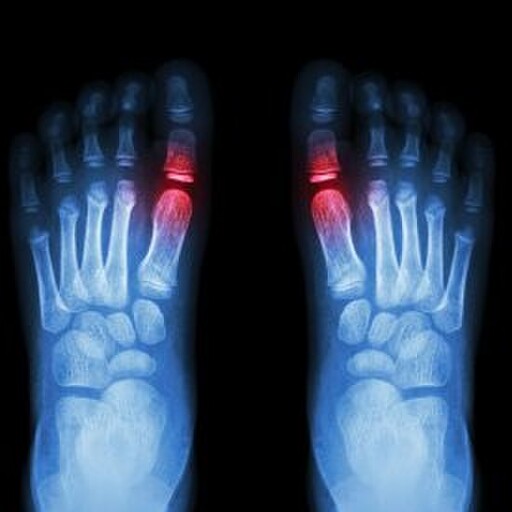Sesamoiditis
What is Sesamoiditis?
“Pain under the ball of the big toe”
Most bones in the human body are connected to each other at joints. But there are a few bones that are not connected to any other bone. Instead, they are connected to, imbedded within tendons. These are called the Sesamoids.
The kneecap (patella) is the largest Sesamoid. Two other very small Sesamoids (about the size of a kernel of corn) are found on the underside of the big toe joint. Sesamoids act like pulleys providing an increase lever arm to the big toe flexor muscles. They glide within their joint, grooves under the big toe joint called Crest, providing a smooth surface over which the tendons slide, increasing the ability of the tendons to transmit muscle forces. The big toe’s sesamoids help the big toe to flex, contract and push giving it more pushing power
Signs & Symptoms
Sesamoiditis can be particularly frustrating and concerning to patients. In most cases, the pain is significant in yet you can’t see anything that may be causing the pain. The pain can often prevent walking or standing for any length of time and worse when standing or walking on hard surfaces or in bare feet.
Pain is focused under the big toe on the ball of the foot.
With Sesamoiditis, pain may develop gradually.
With a fracture, the pain will be immediate.
Swelling and bruising may or may not be present.
You may experience difficulty and pain in bending and straightening the big toe.
Causes
Sesamoiditis, (Sesamoid “itis” inflammation of).
When the tissues around the sesamoid bones become inflamed, this is referred to as Sesamoiditis.
Patients who spend long hours standing or walking on hard surfaces, runners, joggers or patients who have worn high heels for longer than usual may develop Sesamoiditis.
The abnormal position of the big toe joint can also, over time, result in its overloading, resulting in Sesamoiditis and develop into a Sesamoid stress fracture.
Heavy and repeated impact places mechanical stress on the soft tissues underneath the big toe can also result in Sesamoid injury, resulting in a Sesamoid fracture. Sesamoid fractures can also occur when a person falls and lands bluntly on the ball of the foot, or stubs the ball of the foot against a hard edge or curb.
Sesamoid bones normally glide through a joint, grooves (Cresta) that are positioned under the end of big bone (1st Metatarsal Shaft ) of the big toe joint. Like other joints in the body, this joint can wear out, developing osteoarthritis. Osteoarthritis of the Sesamoid Joints (Cresta) is more likely to be a problem in people who have high arches in their feet. The high arch causes the main joint of the big toe to become rigid. This focuses strain and pressure on the Sesamoids causing them to “stick”.
In some cases, the blood supply to the Sesamoid bone becomes decreased. This condition is called osteochondritis. Osteochondritis causes a piece of the bone to actually die. The body's attempts to heal the area may build up extra calcium around the dead spot.
Other causes can included but are not limited to:
Footwear that is poorly fitting or unsuitable
Loss of the foot’s fatty padding under the Sesamoids
Prolonged use of steroidal anti-inflammatory medication
Trauma, accidental, eg Pott’s fracture, and surgical
Bone tumour, non-cancerous and malignant
Inflammatory disease, eg, gout, rheumatoid arthritis, Marie Tooth Charcot disease, Giant cell tumour (GCT)
Gastrocnemius Equinus
Calcium deficiency
Peripheral Vascular Disease (PVD) - smoking
Chronic Obstructive Pulmonary Disease (COPD)
Diagnosis
The correction of any foot disorder is dependent on the provider understanding the cause of that disorder.
Our specialist podiatrist, Stefan, is highly qualified and experienced with over 30 years of clinical practice. His knowledge and experience enables him to offer a thorough, in-depth assessment of your condition. This may include but is not limited to an examination to help determine the severity of your toe deformity.
Specialist examination to help determine the exact location of your pain can help for an effective treatment management plan. A biomechanical assessment and gait analysis can also be used.
Sesamoiditis is often related to your foot shape and the way in which your foot moves when you walk or stand (a biomechanical abnormality). If this is the case, the use of prescription orthotics and change of footwear may be recommended.
If the circulation at your forefoot is questionable, a colour doppler ultrasound can be used to assess blood flow.
Sometimes low dose digital X-ray, low dose fluoroscopy, can help to investigate Sesamoiditis. In some cases haematological tests or a referral to MRI may be required.
Once a diagnosis is determined; he will spend time to fully explain your condition, providing treatment options aimed at providing you with a long-term pain relief for your specific condition.
Treatment
As will all foot and ankle disorders, your treatment will depend upon your diagnosis.
Treatment may include but in not limited to:
Rest - this allows the healing and the inflammation and pain to subside
The use of prescription orthotics to off load the painful area
Change of foot wear to lower heels or shoes with improves forefoot cushioning
Change of activity
Targeted stretching regimes to reduce forefoot pressure
Reduction of body weight
The use of dietary supplements aimed at reducing inflammation, please ask you Podiatrist, Naturopath, GP or Pharmacist for advice
Reduction or stop drinking alcohol
Eating a balanced diet, eating whole foods, avoiding processed food and sugar.
The short-term use of non-steroidal anti-inflammatories. Please ask your Podiatrist or GP before using these
Sesamoiditis often affects patients with high arches. If you feel you have a high arch, try to avoid shoes with a hard sole at the fore foot. High heels can look fabulous however that can cause havoc on your feet and are often guilty in producing Sesamoiditis. If you want to wear them, limit their use to dinners or special occasions where you know you won’t be walking or standing for very long.
Prevention is better than cure, if you start developing pain underneath the big to joint, to avoid further unnecessary injury, please contact us, we can help.
Prevention
The human foot is a miracle of engineering and can normally cope with most of the stresses we throw at it, choose appropriate footwear for your activity and your Sesamoids should hopefully remain symptom-free.

